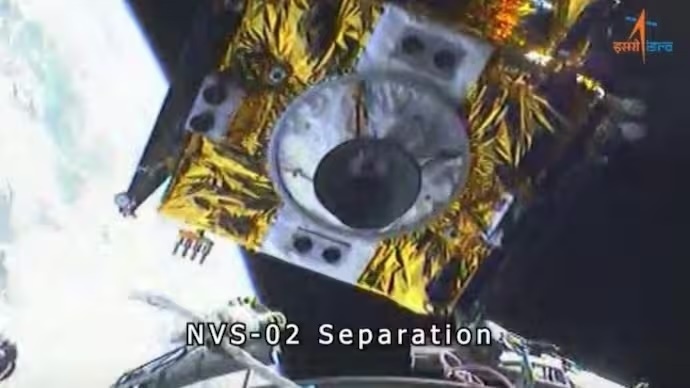4.02.2025
NVS-02 satellite mission update: Following its launch, NVS-02 was successfully placed in a Geosynchronous Transfer Orbit (GTO), but without the ability to activate its thrusters, it remains stuck in an elliptical orbit.

Isro has confirmed that communication with the satellite is intact. (Photo: Isro)
The Indian Space and Research Organisation (Isro) is looking at alternatives to save its NVS-02 satellite part of NavIC constellation after it suffered a major failure after deployment.
The NVS-02 satellite encountered a critical failure in its Liquid Apogee Motor (LAM) system, specifically with the oxidizer valve that prevents the thrusters from firing and executing necessary orbit-raising manoeuvres.
Following its launch, NVS-02 was successfully placed in a Geosynchronous Transfer Orbit (GTO), but without the ability to activate its thrusters, it remains stranded in an elliptical orbit.
"LAM has to fire as and when required for the calculated duration. LAM is a pressure-fed liquid engine and the oxidiser and fuel are stored separately in pressurised tanks and pressure is maintained using inert gases. In the case of NVS-02 the valve that controls the flow of oxidiser did not open resulting in no flow of oxidiser to the combustion chamber hence the orbit-raising burns of LAM were not carried out," Manish Purohit, a former Isro engineer told IndiaToday.in.
WHY COULD NVS-02 CRASH?
The spacecraft is currently stuck in a geostationary transfer orbit. This malfunction is particularly concerning because the satellite was intended to reach a geostationary orbit (GEO), which is crucial for providing reliable navigation services across India.
Isro has confirmed that while communication with the satellite is intact and all other systems are functioning properly, the failure of the oxidizer valve means that the LAM cannot fire, leaving NVS-02 unable to ascend to its designated orbit.
Isro has convened a dedicated committee to explore recovery options. While alternative mission strategies are being considered for utilising the satellite in its current orbit, experts warn that without corrective action, NVS-02 could eventually fall back to Earth.

"Without LAM firing, the spacecraft cannot be placed in the desired orbit, which means now it will stay in the given orbit. Future actions from Isro might involve squeezing out the maximum output possible from the Spacecraft from this highly elliptical orbit," Manish added.
WHY COULD NVS-02 CRASH?
Without the ability to activate its thrusters, NVS-02 remains stranded in an elliptical orbit where orbital perturbations and space atmosphere drag begin to act on the satellite.
The drag will keep pulling the satellite out of orbit and set it on a path of atmospheric re-entry where it will disintegrate and burn.
The NVS-02 satellite is the second satellite in India’s next-generation NavIC system, a regional satellite navigation system designed to provide precise positioning, velocity, and timing data for users across India and up to 1,500 km beyond its borders.
Quelle: INDIA TODAY
